
FOOTBALL CONCUSSIONS
By Charles Apple The Spokesman-Review
It’s that time of year again: The increasing crispness of the fall air, the marching bands, cheerleaders and the renewal of football rivalries.
All too often, however, this is also the time of year a lot of young people begin suffering from traumatic head injuries due to collisions on the field — especially a football field.
Here’s what you need to know about high schoolers and sports head injuries.
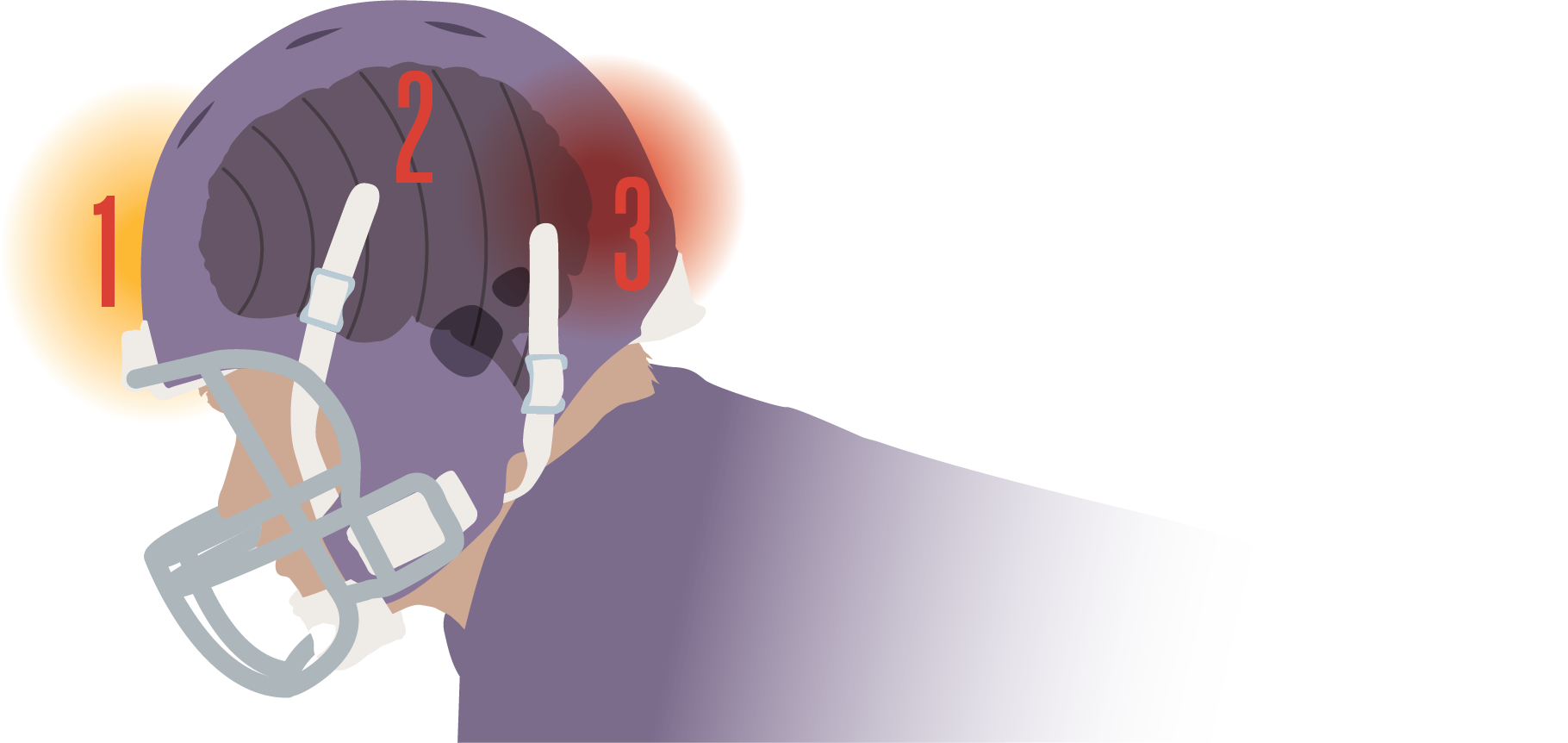
- A typical football “shot to the head” may, in fact, be a jolt ranging from 17 to 25 miles per
hours and
result in a force 98 times the force the gravity.
Fact: At least one player sustains a mild concussion in nearly every football game in the U.S. - The brain is cushioned inside the skull by an envelope of cerebrospinal fluid. The shock of the blow may exceed the protective ability of this cushion.
- The shock wave passes through the brain and bounces off the back of the skull. The concussion usually occurs at the opposite side from the point of impact.
The impact can cause bruising of the brain, tearing of the blood vessels and nerve damage.

And it’s not just football
Yes, football accounts for more than half of concussions among high school athletes. But only a little more than half. Girls’ basketball and girls’ soccer are high on the list of the most common causes for sports concussions.
CONCUSSIONS AMONG HIGH SCHOOL ATHLETES, 2011-2014
CONCUSSIONS AMONG HIGH SCHOOL ATHLETES, 2011-2014
Boys' Football
1,020
Per 10,000 "athlete-exposures" 9.21












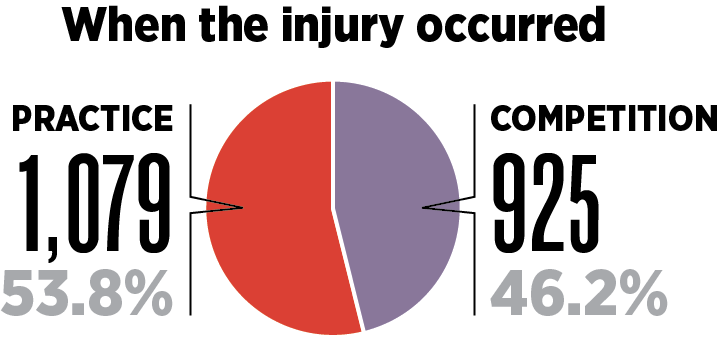
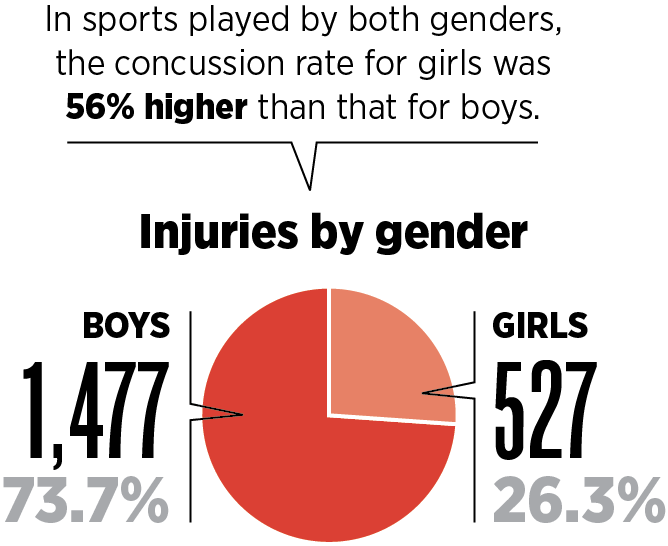
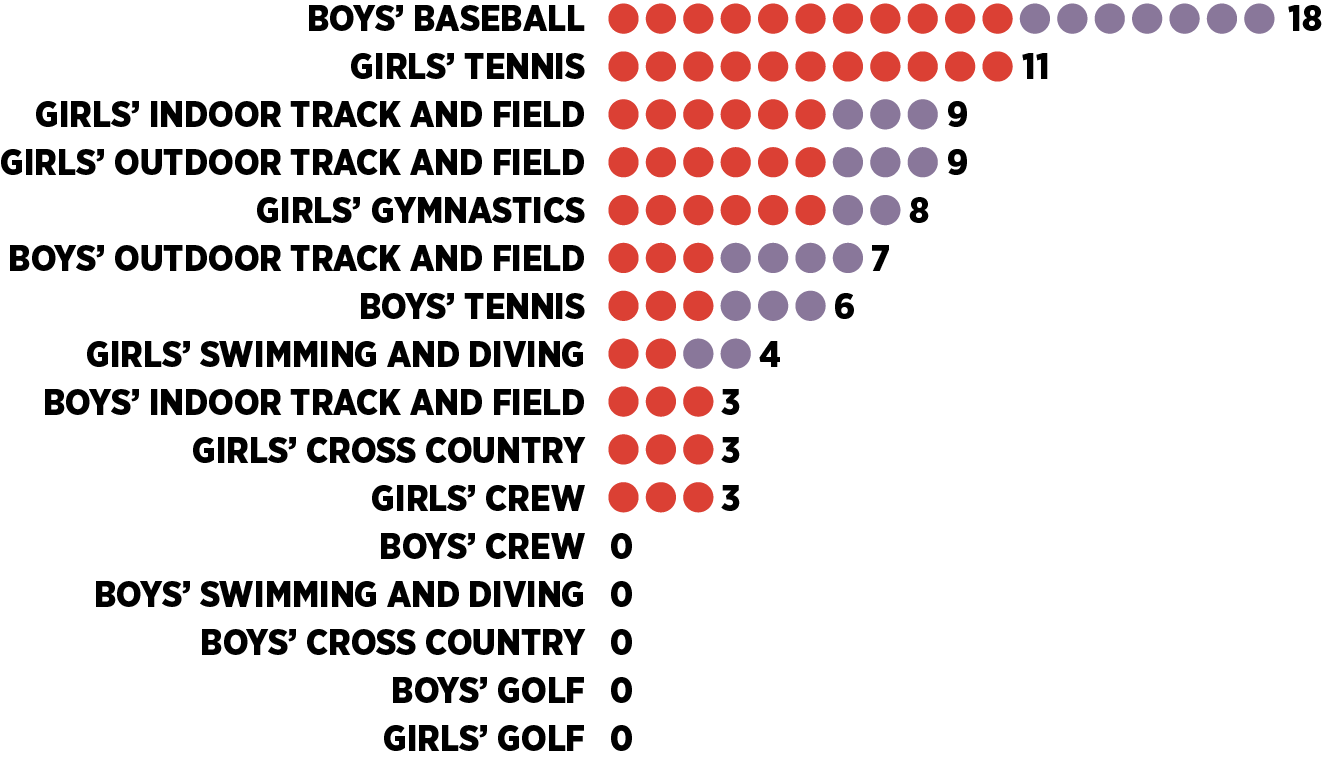
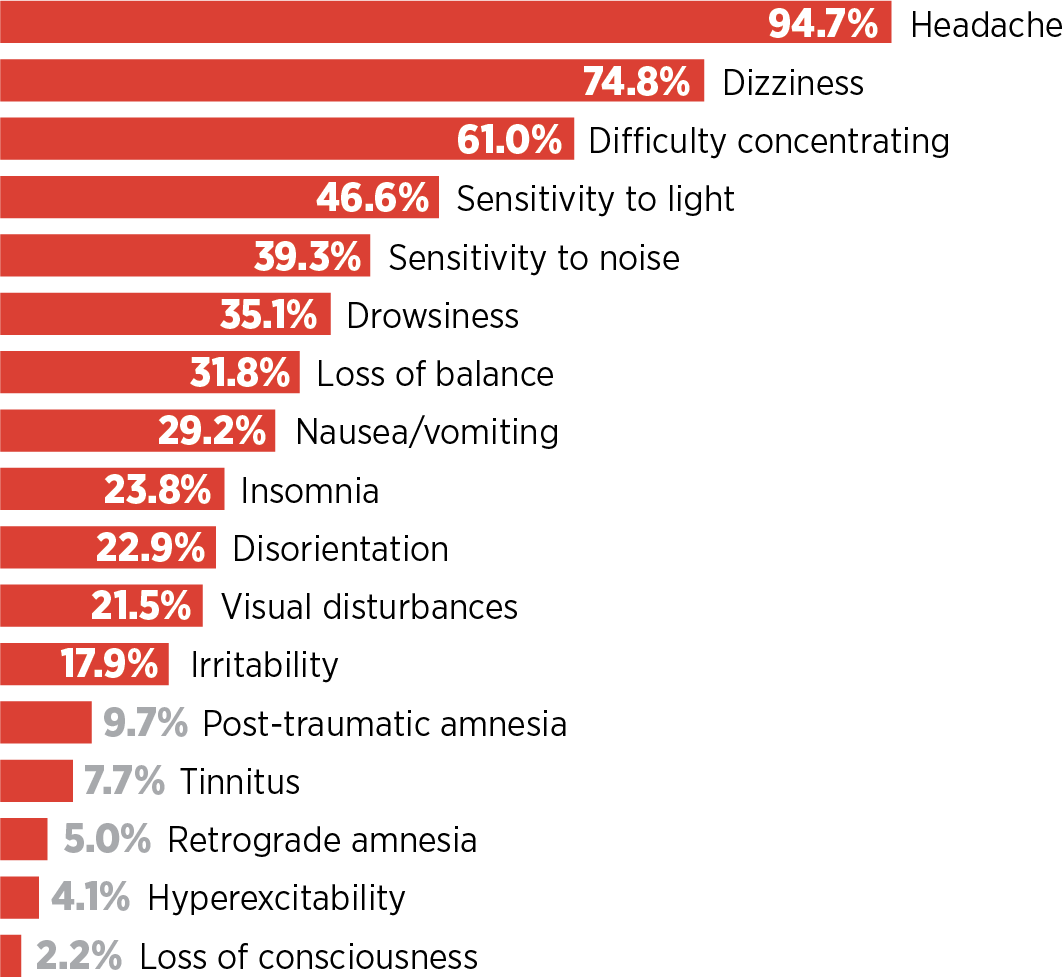
Typical symptoms of a concussion and how common each symptom is in a high school sports head injury.
Treating a concussion
First, the important part: The old “shake it off” approach — so familiar to us who played football in the 1970s and '80s — is the worst possible way to deal with a possible concussion.
The first 24 hours are critical.The idea is to reduce noise and stimulation and reduce the traffic that goes into the brain.
- Don’t let the student-athlete watch TV.
- Take away the student-athlete’s cellphone.
- Don’t let the student-athlete play video games.
- Don’t use Motrin or Advil. Stick with Tylenol
(acetaminophen). - Don’t let the student-athlete go right back to school.
Slowly integrate him or her into schoolwork and homework. - Let the student-athlete sleep. As much as he or she wants to, really, but wake them up every two or three hours to check their condition. A concussion patient might require two to four more hours of sleep a night than usual, for up to two or three weeks following an injury.
Changing the culture
For help in the long run, these things must happen.
- All parties involved must become educated.
This includes coaches, trainers, players and parents. - Any athlete who suffers a head injury — even if it’s not yet known if there is a concussion — must be removed from play. No exceptions.
Sources: Journal of Athletic Training, Centers for Disease Control and Prevention, MayoClinic.com, Mission Hospital of Mission Viejo, Calif., The Orange County Register